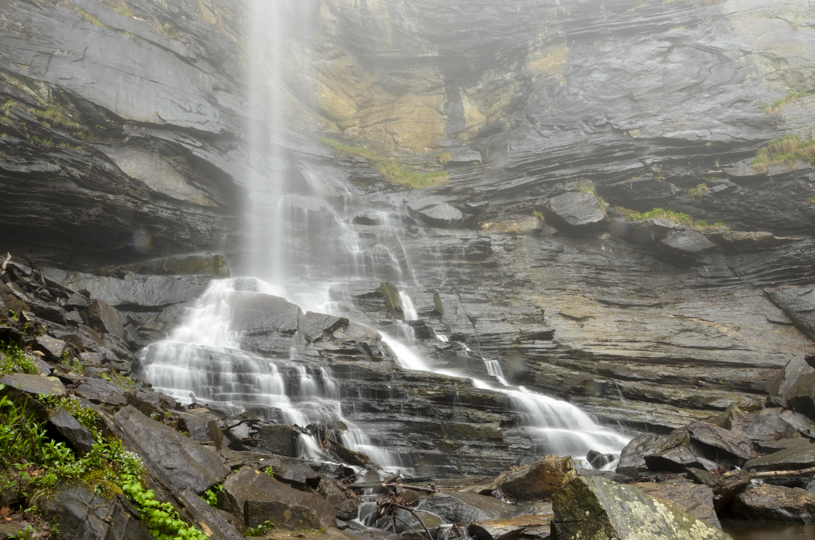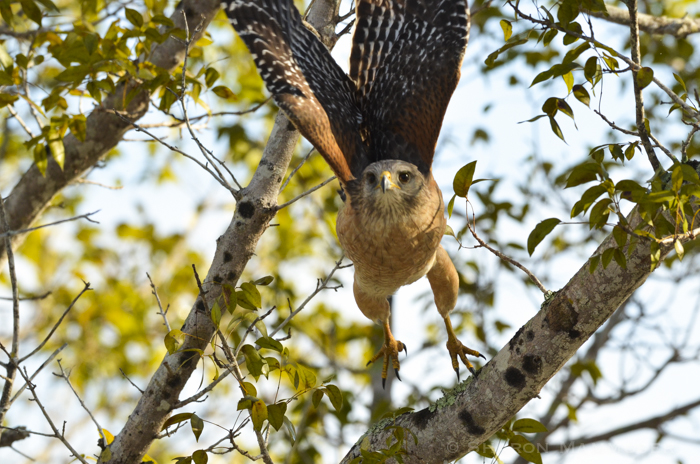 Last week’s Puzzler was the piercing call of the Red-shouldered Hawk, one of our most common North American raptors. This is a hawk whose call you may have heard as you were out kayaking or taking a walk in the woods or maybe in your own yard depending on where you live. Like other birds of prey, this raptor possesses many adaptations that make it perfectly suited to its environment. Let’s see what we can learn about this noisy, and handsome bird!
Last week’s Puzzler was the piercing call of the Red-shouldered Hawk, one of our most common North American raptors. This is a hawk whose call you may have heard as you were out kayaking or taking a walk in the woods or maybe in your own yard depending on where you live. Like other birds of prey, this raptor possesses many adaptations that make it perfectly suited to its environment. Let’s see what we can learn about this noisy, and handsome bird!
1. The presence of Red-shouldered Hawks indicates tall trees and water. They prefer wet forests with tall hardwood trees, especially bottomlands near marshes, swamps, rivers or streams.
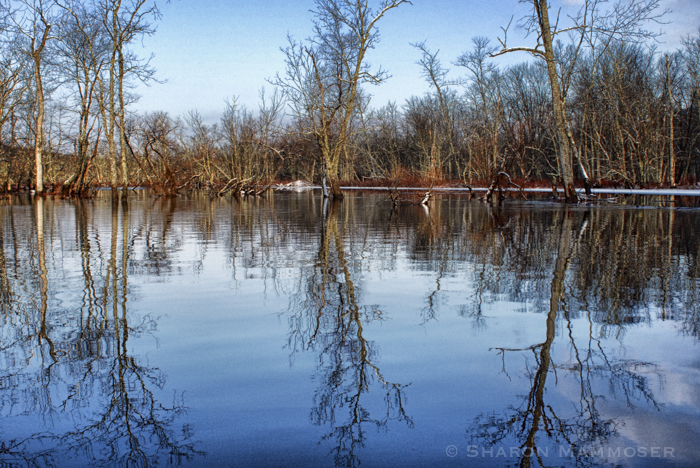
2. They have a varied diet, often hunting from perches near water. They eat frogs, toads, crayfish, snakes, lizards, birds, insects, and small mammals like voles and chipmunks.
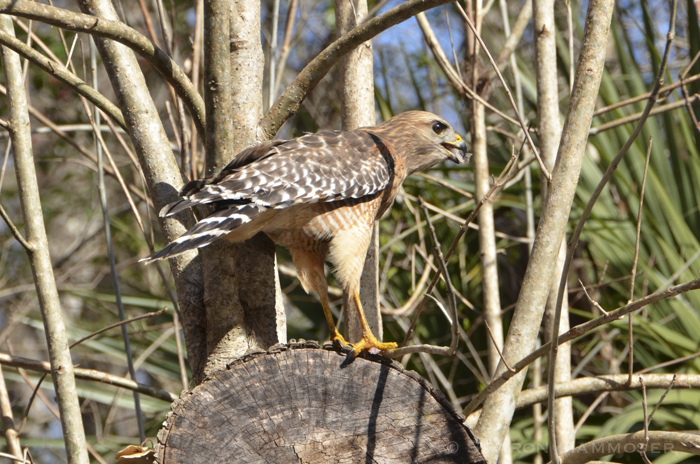
3. Red-shouldered Hawks are 16.0 -24 inches long, with a wingspan of 37-43 inches and weigh 17-27 ounces. The Red-shouldered hawk is smaller than a Red-tailed Hawk, but larger than a Broad-winged Hawk.
4. Red-shouldered Hawks get their names of course from their red shoulders! They have reddish-brown chests and shoulders, a strongly banded tail and barred wings that in flight have a crescent “window” in them.
5. At 5 days old, young birds have the rare talent of being able to aim their butts out of the nest and shoot their feces over the edge... evidence of OCD in birds or just nature’s way of everyone doing their part to keep the nest clean?
6. Both sexes help with nest construction, a process that takes 1 to 5 weeks. They will return to the same nesting spot each year, refurbishing an old nest when possible. The nest will be 2 feet in diameter and lined with bark, lichen, moss and conifer sprigs. The adults will add fresh green leaves throughout the nesting season.
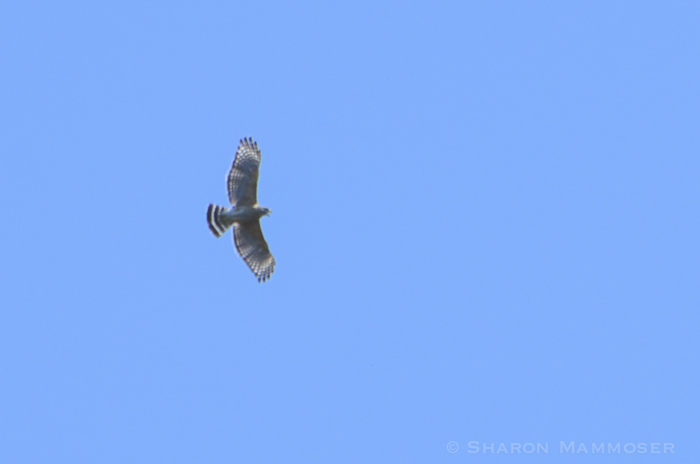
7. The courtship rituals of Red-shouldered Hawks are quite impressive, complete with lots of loud calling to alert the world that this is going on. If you’ve ever heard this, or seen it, you know what I mean! The pair participates in a “sky dance”, with both sexes circling together. Then the male sometimes swirls upwards and then dives down towards the female, all the while calling loudly Krrrr, Krrrr, Krrrrr voice that seems to carry for miles. Countship lasts 18 days. (Click below to hear the call of the Red-shouldered Hawk, from Lang Elliot at Nature Sound Studios)
Audio Player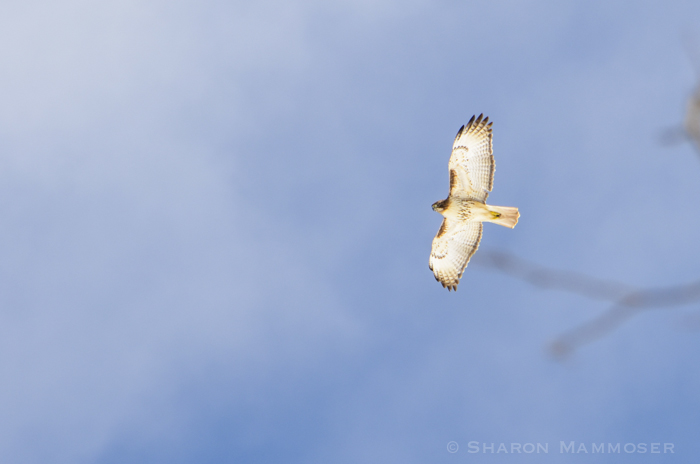
8. Red-shouldered Hawks are found though out the eastern United States and Canada and in the west in Oregon, California and south to Mexico.
9. Pairs are monogamous, breeding for the first time when they are two years old. Each year they have one clutch but if something happens and that clutch fails, they may try again with a second brood.
 10. Unlike many other birds, the female hawk will start to incubate the eggs before they are all laid. This is called asynchronous incubation and means the young will not hatch at the same time. She will incubate the eggs for 32-40 days. During this time, the male will bring her food, announcing his catch each time by calling from a short distance away. When the young hawks are 7-8 weeks old they will begin hunting by themselves, at first catching insects before they graduate to vertebrates.
10. Unlike many other birds, the female hawk will start to incubate the eggs before they are all laid. This is called asynchronous incubation and means the young will not hatch at the same time. She will incubate the eggs for 32-40 days. During this time, the male will bring her food, announcing his catch each time by calling from a short distance away. When the young hawks are 7-8 weeks old they will begin hunting by themselves, at first catching insects before they graduate to vertebrates.
I hope you make some time to get outside this week and that you have a wonderful wildlife encounter. Maybe you will hear or see a Red-shouldered Hawk soon. They are impressive birds, and always fun to see! Happy day!
Resources:

